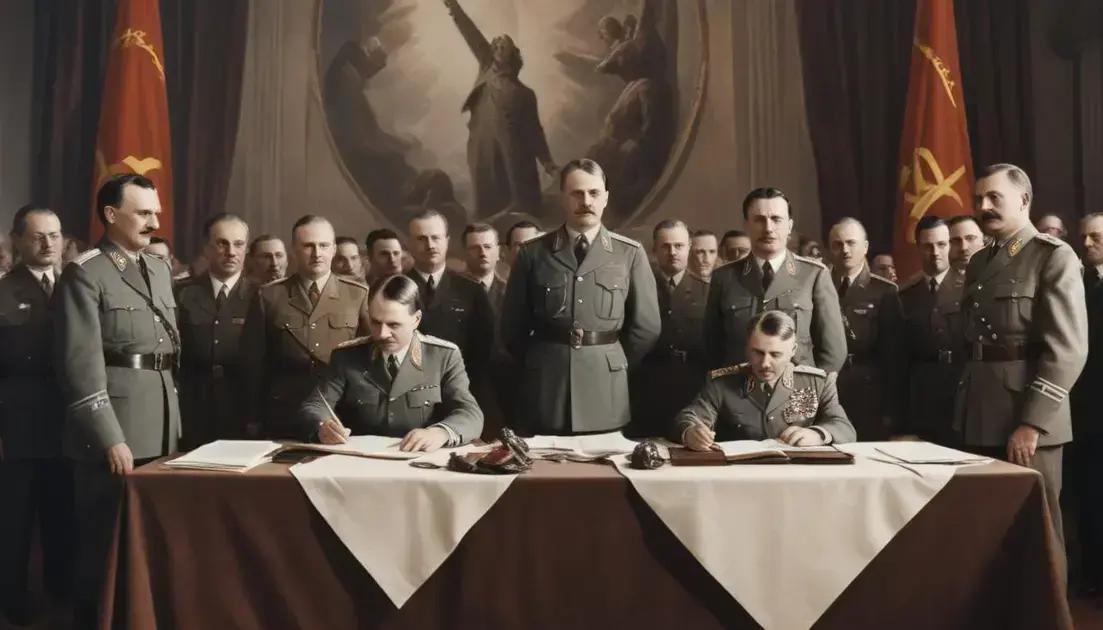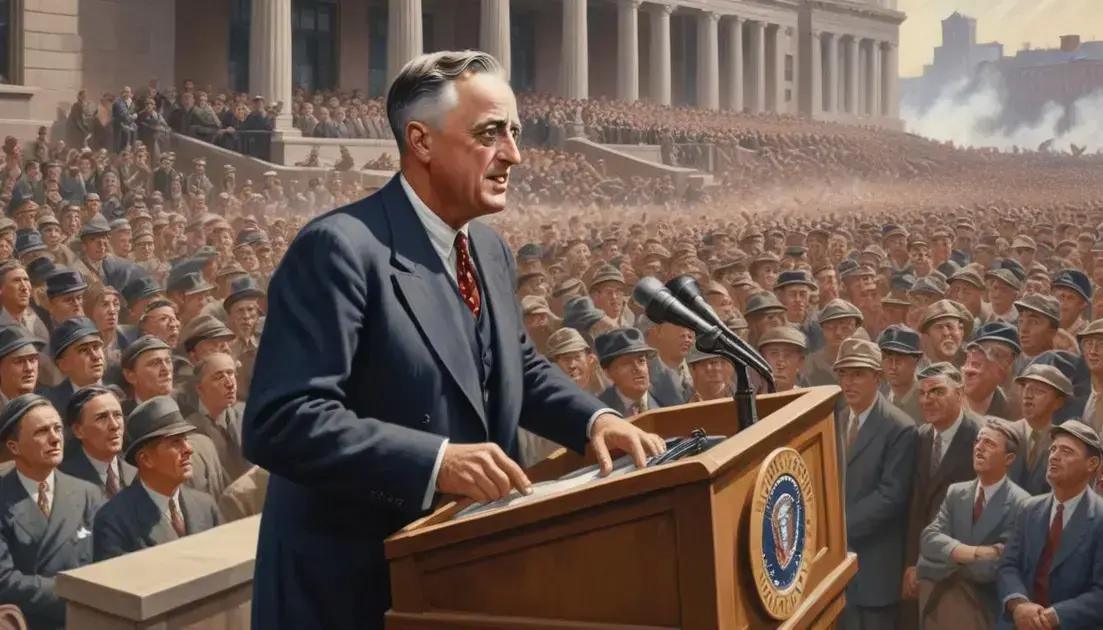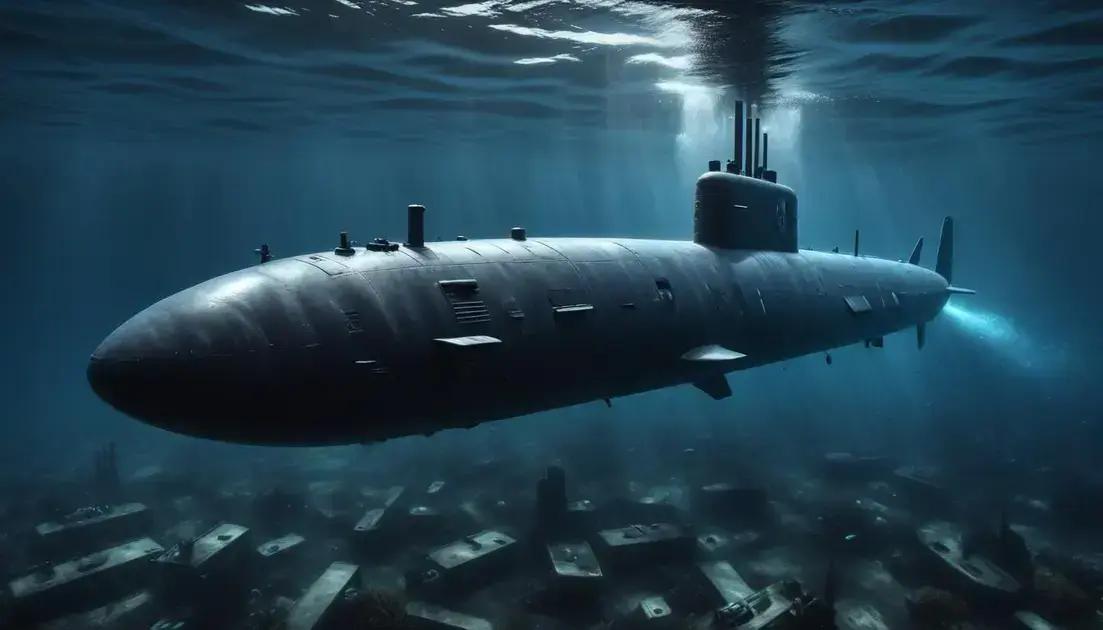
Molotov-Ribbentrop Pact: Secret Pact Between Hitler and Stalin
The Molotov-Ribbentrop Pact, signed in 1939 between Germany and the Soviet Union, was a significant non-aggression agreement that enabled both nations to expand their territories without conflict initially. It had key clauses, including the division of Eastern Europe, which directly impacted Poland and shaped the early stages of World War II. The aftermath of this pact led to distrust among European nations and influenced post-war alliances, highlighting the lasting effects of such political agreements on global dynamics.
The Molotov-Ribbentrop Pact marked a turning point in history, setting the stage for unimaginable events. What really happened in this secret alliance?
The Background of the Pact
The background of the Molotov-Ribbentrop Pact traces back to the tense atmosphere of Europe in the late 1930s. As World War II loomed, countries were positioning themselves for strategic advantages. The agreement was signed on August 23, 1939, just days before Germany invaded Poland.
This pact was a surprise to many. Nazi Germany and the Soviet Union were seen as ideological enemies. Still, they found common ground. Both wanted to expand their territories without facing each other.
Key Drivers Behind the Pact
The need for security influenced both nations. Germany sought to ensure it wouldn’t face a two-front war. Meanwhile, the Soviet Union wanted to buy time and strengthen its defenses.
Add to this the fear of rising threats from Western powers. Many countries in Europe were not prepared for the impending war. Thus, signing this pact was a calculated risk for both Hitler and Stalin.
The Secret Protocols
Beneath the surface, there were secret protocols. These clauses divided Eastern Europe into spheres of influence. Poland was a significant piece of this puzzle. Both nations agreed to invade and split Poland, setting the stage for conflict.
This behind-the-scenes agreement shocked the world. The idea that these two powers could collaborate raised eyebrows everywhere. It also highlighted the desperation of the times. Nations were willing to make deals they once thought impossible.
Understanding the background of the Molotov-Ribbentrop Pact is crucial. It reveals how strategy and fear drove nations to unite for their self-interest, even when it seemed unlikely.
Key Clauses of the Pact
The Molotov-Ribbentrop Pact had key clauses that shaped its impact on Europe. First, it included a non-aggression agreement. This meant Germany and the Soviet Union promised not to attack each other. This clause was crucial for both countries.
Another important aspect was the secret protocol. This part secretly divided Eastern Europe between the two powers. Nations like Poland were specifically mentioned. Each power aimed to expand its influence without direct confrontation.
Territorial Divisions
The territorial divisions specified how each country would occupy parts of Eastern Europe. For example, the Soviet Union would take control of the eastern areas of Poland. Germany, on the other hand, was to control the western part.
This division had a lasting impact on the region. It changed borders and shifted populations. Whole communities found themselves under new governments overnight.
Military Cooperation
The pact also called for military cooperation. Though not always used, this cooperation aimed to strengthen both nations against potential enemies. This alliance was unexpected and raised concerns throughout Europe.
Understanding these key clauses helps explain why the Molotov-Ribbentrop Pact remained significant. It was not just a simple agreement, but a crucial step towards the unfolding of World War II.
Impact on World War II
The Molotov-Ribbentrop Pact had a big impact on World War II. When Germany and the Soviet Union signed the pact, it changed the balance of power in Europe. This agreement allowed Germany to invade Poland without worrying about a Soviet attack.
With the pact in place, Germany faced less resistance. They quickly took control of Poland in September 1939. This invasion marked the start of World War II. The Soviet Union, following their part of the agreement, invaded from the east shortly after.
Strategic Advantages
The pact gave both countries strategic advantages. Germany avoided a two-front war, which had drained resources in World War I. The Soviet Union gained territory and influence in Eastern Europe.
This also encouraged other countries to take action. Nations began to realize that alliances were crucial for their safety. Fear of aggression spread throughout Europe as the countries took sides.
Shift in Alliances
The consequences of the Molotov-Ribbentrop Pact shifted alliances. Countries that once aligned with Germany became suspicious. This prompted Britain and France to solidify their alliance against the Axis powers.
The pact created distrust across Europe. After it was broken in 1941, when Germany invaded the Soviet Union, the landscape of the war changed again. Now both nations found themselves as enemies.
Overall, the impact of the Molotov-Ribbentrop Pact was significant. It not only shaped the early actions of World War II but also influenced future alliances and conflicts.
Aftermath and Consequences
The aftermath of the Molotov-Ribbentrop Pact left a significant mark on Europe and beyond. After the agreement, both Germany and the Soviet Union quickly expanded their territories. This led to a shift in power dynamics across the continent.
For Poland, the consequences were dire. The invasion in 1939 divided the country between the two powers. Many Polish people faced occupation, loss of freedom, and harsh rule.
Impact on Eastern Europe
The pact allowed the Soviet Union to control parts of Eastern Europe. This domination lasted for decades, influencing the politics and society of countries like Lithuania, Latvia, and Estonia. These nations suffered greatly under Soviet rule.
Germany, on the other hand, gained initial success with its swift military tactics. However, the break of the pact in 1941 changed everything. When Hitler invaded the Soviet Union, it opened a brutal and costly front in World War II.
Long-term Effects
The long-term effects of the pact echoed throughout the Cold War. The trust between Western powers and the Soviet Union deteriorated. Countries had to rebuild and redefine their alliances.
In the end, the Molotov-Ribbentrop Pact set the stage for future conflicts. The consequences of this agreement are still felt in modern politics today. It serves as a reminder of how deals made out of self-interest can have lasting impacts.
Conclusion
In conclusion, the Molotov-Ribbentrop Pact had far-reaching effects that shaped the course of World War II and influenced decades to come. The initial cooperation between Germany and the Soviet Union allowed for significant territorial gains but also set the stage for future conflicts.
As we reflect on the aftermath and consequences, it’s clear that this agreement not only changed the lives of millions but also altered the political landscape in Europe. The impacts were felt in the long term, affecting nations for generations.
By understanding these events, we can gain insights into how political agreements can lead to unintended consequences. This history reminds us of the importance of dialogue and the lasting effects of decisions made in times of crisis.


